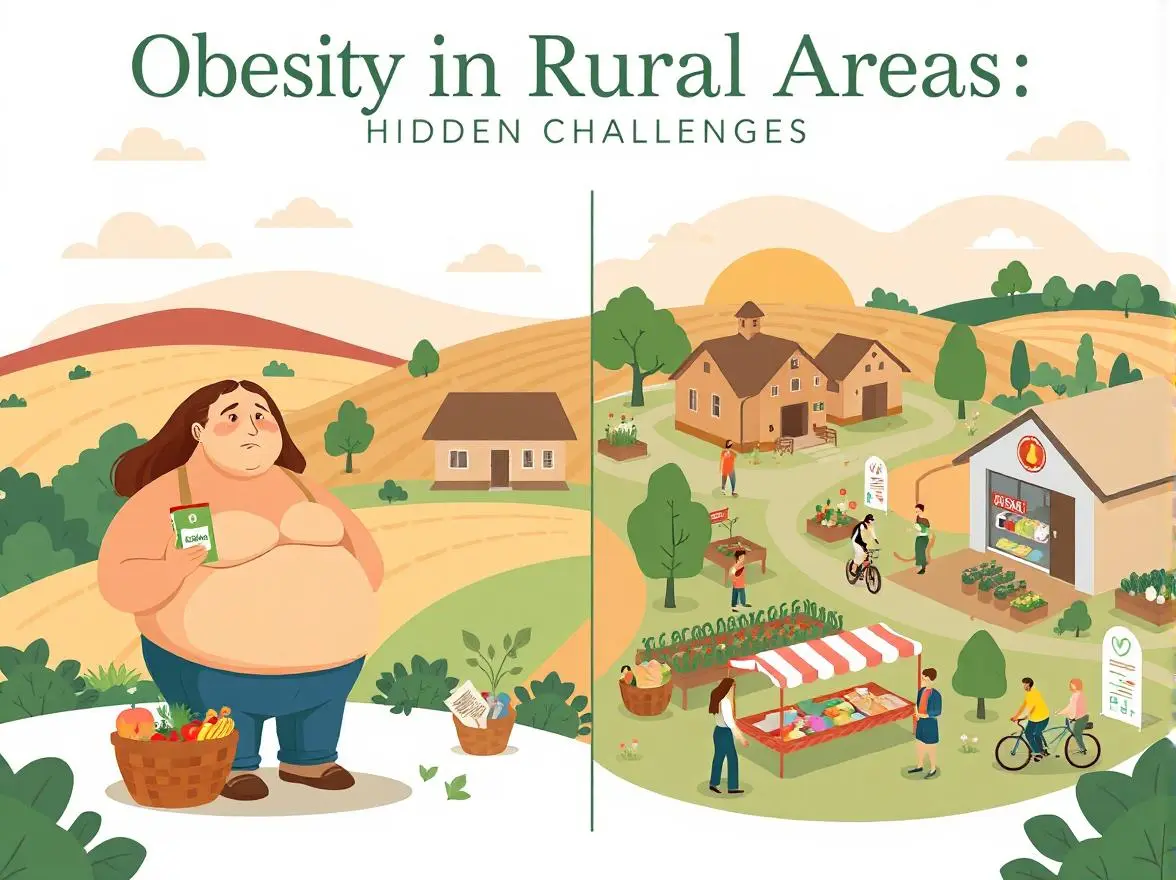Welcome to the world of rural America, where the charm of small towns meets the challenge of obesity. In these areas, access to healthy food options can be limited, making it difficult for residents to maintain a balanced diet. Lack of opportunities for physical activity only adds to the struggle, as the joys of outdoor exercise are often overshadowed by the convenience of sedentary lifestyles. Socioeconomic factors play a significant role as well, with poverty and lack of resources contributing to unhealthy habits. Health care disparities further exacerbate the issue, making it harder for individuals to seek proper treatment and guidance. Cultural attitudes towards body weight can also play a role, influencing how individuals perceive and address their health. But fear not, for there are strategies to combat obesity in rural areas, from community initiatives to educational programs. Let’s explore how we can work together to create healthier, happier communities.
II. Lack of Access to Healthy Food Options
Hey there! So, have you ever found yourself living in a rural area and struggling to find fresh fruits and vegetables? You’re not alone! One of the major challenges in rural communities is the lack of access to healthy food options. Grocery stores may be few and far between, and what they offer might not always be the healthiest choices.
But don’t worry, there are ways to overcome this obstacle! One tip is to explore farmers markets or local co-ops for fresh produce. You can also consider growing your own fruits and vegetables in a garden or even in containers on your porch.
Remember, making small changes in your diet can have a big impact on your health. So, get creative and find ways to incorporate more nutritious foods into your meals, even if you’re in a rural area!
Limited Opportunities for Physical Activity
Living in a rural area can sometimes mean limited options for staying active, but fear not – there are plenty of creative ways to get moving! Whether it’s taking a scenic hike, cycling along country roads, or even just dancing around your living room, finding ways to incorporate physical activity into your daily routine is key to maintaining a healthy lifestyle. Remember, every little bit counts!
Consider joining a community sports team, starting a walking group with neighbors, or even just scheduling regular workout sessions with friends. By making exercise a social activity, you’ll not only improve your physical health but also strengthen your social connections.
Don’t let living in a rural area hold you back from leading an active lifestyle. Get creative, have fun, and remember that taking care of your body is always worth it!
Alright, let’s talk about the elephant in the room – socioeconomic factors contributing to obesity in rural areas. It’s no secret that income levels, education, and access to resources play a significant role in determining our health outcomes. In rural communities, limited job opportunities, lower income levels, and higher rates of poverty can make it challenging to afford healthy food options or access quality healthcare services.
So, what can we do about it?
- Advocating for policies that promote economic development and job creation in rural areas can help improve overall health and well-being.
- Supporting initiatives that provide affordable access to nutritious foods and resources for physical activity can make a big difference in combating obesity.
- Educating community members about the importance of making healthy choices and providing support for those looking to make positive lifestyle changes is crucial.
Health Care Disparities in Rural Communities
When it comes to obesity in rural areas, access to quality healthcare can play a significant role. Unfortunately, many rural communities face challenges in accessing healthcare services, including obesity management programs and resources. This lack of access can lead to delayed diagnoses, inadequate treatment, and overall poorer health outcomes.
It’s essential for individuals living in rural areas to advocate for themselves and seek out healthcare providers who are knowledgeable about obesity and its associated health risks. Regular check-ups, screenings, and discussions about weight management can help prevent obesity-related complications.
- Be proactive in scheduling regular visits with healthcare providers.
- Ask questions and seek guidance on healthy lifestyle choices.
- Seek out support groups or community resources for obesity management.
Cultural Attitudes Towards Body Weight
When it comes to obesity in rural areas, cultural attitudes towards body weight play a significant role. In some communities, there may be a cultural norm that values larger body sizes as a sign of prosperity or good health. This can lead to a lack of awareness about the health risks associated with obesity.
It’s important to remember that health should always come first, regardless of cultural beliefs. Educating communities about the impact of obesity on overall health and well-being can help shift these attitudes towards a more health-conscious mindset.
Encouraging open and honest conversations about weight and health can help combat stigma and promote a more positive attitude towards body weight. Remember, it’s not about shaming or judging, but about supporting each other in making healthier choices for a better future.
Strategies for Addressing Obesity in Rural Areas
Hey there! So, you’re looking for ways to tackle obesity in rural areas? Well, you’ve come to the right place! Here are some strategies that can help make a positive difference:
- Community Gardens: Encouraging the establishment of community gardens can provide access to fresh fruits and vegetables, promoting healthy eating habits.
- Physical Activity Programs: Organizing group activities such as walking clubs or fitness classes can create opportunities for exercise and social interaction.
- Health Education: Hosting workshops or seminars on nutrition and wellness can empower individuals to make informed choices about their health.
- Policy Changes: Advocating for policies that support access to healthy foods and safe spaces for physical activity can create a supportive environment for healthy living.
By implementing these strategies, we can work together to combat obesity and improve the overall well-being of rural communities. Remember, small changes can lead to big results! Let’s make healthy living a priority for everyone.


